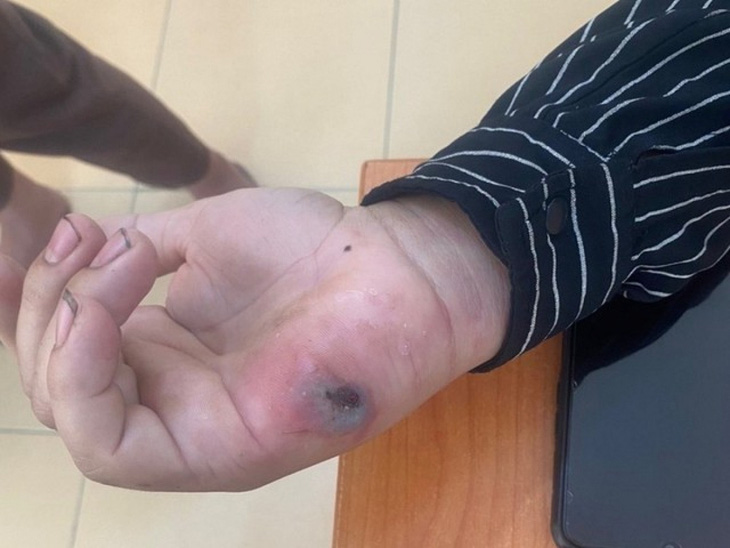
Vaccination against anthrax in cows. Picture: TD.
According to reports from veterinary authorities, there are currently cases of sick and dead buffalo and cows in Xa Nhe and Muong Bang communes in Tua Chua district of Dien Bien province, but these have not been reported to local authorities. Veterinary Administration Authority.
Instead, people slaughter, eat, and sell buffalo and cows with anthracnose disease. A similar case also happened in Chan Nua Township, Sin Ho District, Lai Chau Province.
The results of the inspection and sampling by the Ministry of Animal Health delegation showed that many environmental samples (soil, water) in the slaughterhouses of buffalo and cows showed positive results for anthracnose pathogens.
The main reason is that cattle were not vaccinated against anthracnose. When buffalo and cows die, people do not report to local authorities and veterinary authorities, but slaughter and eat meat indiscriminately, leading to transmission of the disease to humans, including 13 people in Dien Bien and 3 people in Lai Chau.
Therefore, the risk that anthracnose disease will continue to appear in Dien Bien and Lai Chau provinces and spread to other provinces in the near future is very high as people transported, slaughtered, traded and diseased cattle and meat from the original disease have used start range. Dead buffalo and cows are slaughtered on the river bank where thousands of buffalo and cows graze.
In addition, the government and people are subjective in the prevention and control of anthracnose and have stopped vaccination since 2020, so the budget to support annual vaccination implementation is insufficient.
Faced with this situation, the Ministry of Agriculture and Rural Development called on the heads of the Dien Bien and Lai Chau provincial people’s committees to urgently inspect the entire herd of cattle in the region, allocate funds to purchase vaccines and organize vaccinations for vulnerable herds. Muscle. At the same time, vaccinate to surround the outbreak of susceptible cattle from the outside in, in areas where there is no epidemic but adjacent to places where there is epidemic.

Hands of a patient with anthracnose disease from eating infected buffalo and cows. Picture: TD.
The Ministry of Agriculture and Rural Development suggested that local and technical authorities directly organize the treatment and destruction of diseased cattle and support farmers with infected cattle to destroy and collect all their waste. Cattle, the layer of sandy soil on the floor of the barn is then treated with the carcasses of infected animals to prevent the spread and spread of the disease. Using chemicals that kill bacteria and anthracnose spores to regularly and continuously carry out cleaning, disinfection and disinfection measures to kill pathogens.
Another important task is to educate people about the signs and dangers of anthracnose disease and not to arbitrarily transport, slaughter, sell, give away, donate or eat the meat of infected cattle.
People must report to local authorities and veterinary authorities as soon as they find animals showing signs of the disease, coordinate with authorities and specialist agencies to organize how to deal with the outbreak, and strictly implement the following measures: Measures to Disease Prevention and Control.
In particular, it is necessary to instruct people and participants in the control of epidemics and outbreaks to have personal protective equipment, to use biosecurity measures and not to become infected with anthracnose pathogens (since there is a high probability that pathogens, anthracnose spores, have been spread ). in the soil and water environment, in places where there are sick animals, where people slaughter and use sick meat).
In addition, there should be close coordination between the health and veterinary sectors to share information, investigate outbreaks, prevent the spread of pathogens from infected cattle to humans and implement preventive measures. Disease control according to the regulations.

